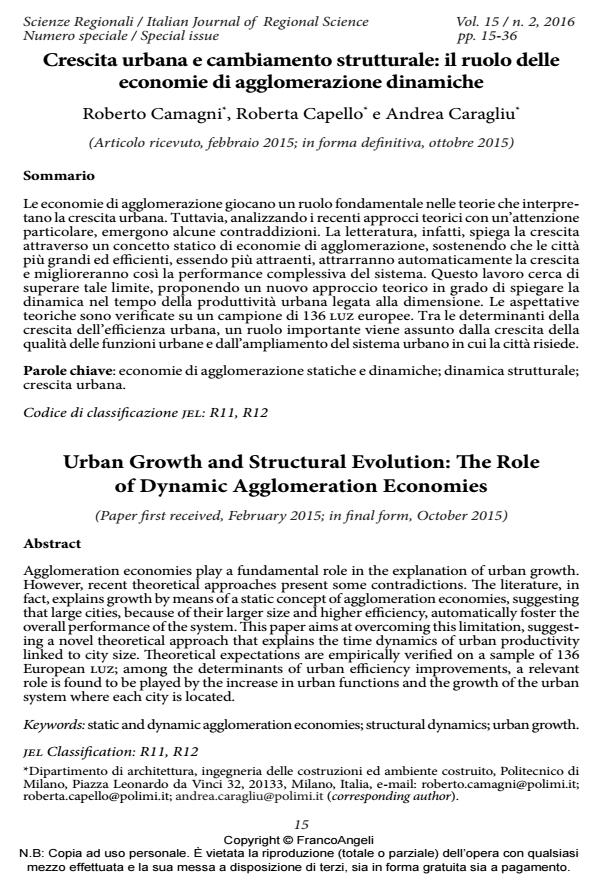Urban Growth and Structural Evolution: The Role of Dynamic Agglomeration Economies
Journal title SCIENZE REGIONALI
Author/s Roberto Camagni, Roberta Capello, Andrea Caragliu
Publishing Year 2016 Issue 2016/2
Language Italian Pages 21 P. 15-35 File size 308 KB
DOI 10.3280/SCRE2016-002002
DOI is like a bar code for intellectual property: to have more infomation
click here
Below, you can see the article first page
If you want to buy this article in PDF format, you can do it, following the instructions to buy download credits

FrancoAngeli is member of Publishers International Linking Association, Inc (PILA), a not-for-profit association which run the CrossRef service enabling links to and from online scholarly content.
Agglomeration economies play a fundamental role in the explanation of urban growth. However, recent theoretical approaches present some contradictions. The literature, in fact, explains growth by means of a static concept of agglomeration economies, suggesting that large cities, because of their larger size and higher efficiency, automatically foster the overall performance of the system. This paper aims at overcoming this limitation, suggesting a novel theoretical approach that explains the time dynamics of urban productivity linked to city size. Theoretical expectations are empirically verified on a sample of 136 European luz; among the determinants of urban efficiency improvements, a relevant role is found to be played by the increase in urban functions and the growth of the urban system where each city is located.
Keywords: Static and dynamic agglomeration economies; structural dynamics; urban growth.
Jel codes: R11, R12
- De la ciudad compacta a la ciudad extensa. Procesos de urbanización recientes en áreas urbanas españolas articuladas por ciudades medias Eduardo Olazabal, Carmen Bellet, in Anales de Geografía de la Universidad Complutense /2019 pp.149
DOI: 10.5209/aguc.64681
Roberto Camagni, Roberta Capello, Andrea Caragliu, Crescita urbana e cambiamento strutturale: il ruolo delle economie di agglomerazione dinamiche in "SCIENZE REGIONALI " 2/2016, pp 15-35, DOI: 10.3280/SCRE2016-002002